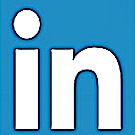
Focus can only occur when we have said yes to one option and no to all other options. In other words, elimination is a prerequisite for focus
Tim Ferriss

How to Improve Focus and Concentration
Focus: What It Is and How it Works

What is focus, really? Experts define focus as the act of concentrating your interest or activity on something. That's a somewhat boring definition, but there is an important insight hiding inside that definition.
What is Focus?

Focus can only occur when we have said yes to one option and no to all other options. In other words, elimination is a prerequisite for focus. Of course, focus doesn't require a permanent no, but it does require a present no. You always have the option to do something else later, but in the present moment focus requires that you only do one thing. Focus is the key to productivity because saying no to every other option unlocks your ability to accomplish the one thing that is left.
Why Can’t I Focus?
Most people don’t have trouble with focusing. They have trouble with deciding. What I mean is that most healthy humans have a brain that is capable of focusing if we get the distractions out of the way. Have you ever had a task that you absolutely had to get done? What happened? You got it done because the deadline made the decision for you. Maybe you procrastinated beforehand, but once things became urgent and you were forced to make a decision, you took action.
Instead of doing the difficult work of choosing one thing to focus on, we often convince ourselves that multitasking is a better option. This is ineffective. Here's why…
Instead of doing the difficult work of choosing one thing to focus on, we often convince ourselves that multitasking is a better option. This is ineffective. Here's why…
The Myth of Multitasking

Technically, we are capable of doing two things at the same time. It is possible, for example, to watch TV while cooking dinner or to answer an email while talking on the phone.
What is impossible, however, is concentrating on two tasks at once. You're either listening to the TV and the overflowing pot of pasta is background noise, or you're tending to the pot of pasta and the TV is background noise. During any single instant, you are concentrating on one or the other.
Multitasking forces your brain to switch your focus back and forth very quickly from one task to another. This wouldn't be a big deal if the human brain could transition seamlessly from one job to the next, but it can't.
Have you ever been in the middle of writing an email when someone interrupts you? When the conversation is over and you get back to the message, it takes you a few minutes to get your bearings, remember what you were writing, and get back on track. Something similar happens when you multitask. Multitasking forces you to pay a mental price each time you interrupt one task and jump to another. In psychology terms, this mental price is called the switching cost.
Switching cost is the disruption in performance that we experience when we switch our focus from one area to another.
What is impossible, however, is concentrating on two tasks at once. You're either listening to the TV and the overflowing pot of pasta is background noise, or you're tending to the pot of pasta and the TV is background noise. During any single instant, you are concentrating on one or the other.
Multitasking forces your brain to switch your focus back and forth very quickly from one task to another. This wouldn't be a big deal if the human brain could transition seamlessly from one job to the next, but it can't.
Have you ever been in the middle of writing an email when someone interrupts you? When the conversation is over and you get back to the message, it takes you a few minutes to get your bearings, remember what you were writing, and get back on track. Something similar happens when you multitask. Multitasking forces you to pay a mental price each time you interrupt one task and jump to another. In psychology terms, this mental price is called the switching cost.
Switching cost is the disruption in performance that we experience when we switch our focus from one area to another.
How to Focus and Increase Your Attention Span

Let's talk about how to overcome our tendency to multitask and focus on one thing at a time. Of the many options in front of you, how do you know what to focus on? How do you know where to direct your energy and attention? How do you determine the one thing that you should commit to doing?
Warren Buffett’s “2 List” Strategy for Focused Attention

Buffett uses a simple 3-step productivity strategy to help his employees determine their priorities and actions.
One day, Buffett asked his personal pilot to go through the 3-step exercise.
STEP 1: Buffett started by asking the pilot, named Mike Flint, to write down his top 25 career goals. So, Flint took some time and wrote them down. (Note: You could also complete this exercise with goals for a shorter timeline. For example, write down the top 25 things you want to accomplish this week.)
STEP 2: Then, Buffett asked Flint to review his list and circle his top 5 goals. Again, Flint took some time, made his way through the list, and eventually decided on his 5 most important goals.
STEP 3: At this point, Flint had two lists. The 5 items he had circled were List A, and the 20 items he had not circled were List B.
Flint confirmed that he would start working on his top 5 goals right away. And that’s when Buffett asked him about the second list, “And what about the ones you didn’t circle?”
Flint replied, “Well, the top 5 are my primary focus, but the other 20 come in a close second. They are still important so I’ll work on those intermittently as I see fit. They are not as urgent, but I still plan to give them a dedicated effort.”
To which Buffett replied, “No. You’ve got it wrong, Mike. Everything you didn’t circle just became your Avoid-At-All-Cost list. No matter what, these things get no attention from you until you’ve succeeded with your top 5.”
Buffett's method forces you to make hard decisions and eliminate things that might be good uses of time, but aren't great uses of time. So often the tasks that derail our focus are ones that we can easily rationalize spending time on.
One day, Buffett asked his personal pilot to go through the 3-step exercise.
STEP 1: Buffett started by asking the pilot, named Mike Flint, to write down his top 25 career goals. So, Flint took some time and wrote them down. (Note: You could also complete this exercise with goals for a shorter timeline. For example, write down the top 25 things you want to accomplish this week.)
STEP 2: Then, Buffett asked Flint to review his list and circle his top 5 goals. Again, Flint took some time, made his way through the list, and eventually decided on his 5 most important goals.
STEP 3: At this point, Flint had two lists. The 5 items he had circled were List A, and the 20 items he had not circled were List B.
Flint confirmed that he would start working on his top 5 goals right away. And that’s when Buffett asked him about the second list, “And what about the ones you didn’t circle?”
Flint replied, “Well, the top 5 are my primary focus, but the other 20 come in a close second. They are still important so I’ll work on those intermittently as I see fit. They are not as urgent, but I still plan to give them a dedicated effort.”
To which Buffett replied, “No. You’ve got it wrong, Mike. Everything you didn’t circle just became your Avoid-At-All-Cost list. No matter what, these things get no attention from you until you’ve succeeded with your top 5.”
Buffett's method forces you to make hard decisions and eliminate things that might be good uses of time, but aren't great uses of time. So often the tasks that derail our focus are ones that we can easily rationalize spending time on.
Measure Your Results
The first thing you can do is to measure your progress.
Focus often fades because of lack of feedback. Your brain has a natural desire to know whether or not you are making progress toward your goals, and it is impossible to know that without getting feedback.
We all have areas of life that we say are important to us, but that we aren’t measuring. That's a shame because measurement maintains focus and concentration. The things we measure are the things we improve. It is only through numbers and clear tracking that we have any idea if we are getting better or worse.
Focus often fades because of lack of feedback. Your brain has a natural desire to know whether or not you are making progress toward your goals, and it is impossible to know that without getting feedback.
We all have areas of life that we say are important to us, but that we aren’t measuring. That's a shame because measurement maintains focus and concentration. The things we measure are the things we improve. It is only through numbers and clear tracking that we have any idea if we are getting better or worse.
- When I measured how many pushups I did, I got stronger.
- When I tracked my reading habit of 20 pages per day, I read more books.
- When I recorded my values, I began living with more integrity.
Focus on the Process, Not the Event

The second thing you can do to maintain long-term focus is to concentrate on processes, not events. All too often, we see success as an event that can be achieved and completed.
Here are some common examples:
What’s funny, of course, is that this focus on the process is what will allow you to enjoy the results anyway.
Here are some common examples:
- Many people see health as an event: “If I just lose 20 pounds, then I’ll be in shape.”
- Many people see entrepreneurship as an event: “If we could get our business featured in the New York Times, then we’d be set.”
- Many people see art as an event: “If I could just get my work featured in a bigger gallery, then I’d have the credibility I need.”
What’s funny, of course, is that this focus on the process is what will allow you to enjoy the results anyway.
- If you want to be a great writer, then having a best-selling book is wonderful. But the only way to reach that result is to fall in love with the process of writing.
- If you want the world to know about your business, then it would be great to be featured in Forbes magazine. But the only way to reach that result is to fall in love with the process of marketing.
- If you want to be in the best shape of your life, then losing 20 pounds might be necessary. But the only way to reach that result is to fall in love with the process of eating healthy and exercising consistently.
- If you want to become significantly better at anything, you have to fall in love with the process of doing it.
Choices & Decisions

Don't rush to the point of Decision. Reconnect to the place of Choice first.
iConsultingINT.com
Manage your energy, not your time

If a task requires your full attention, then schedule it for a time of day when you have the energy needed to focus. For example, If we have noticed that our creative energy is highest in the morning that’s when we make the best strategic decisions about our business. So, what do we do? We schedule creative tasks for the morning. All other business tasks are taken care of in the afternoon. This includes doing interviews, responding to emails, phone calls and Skype chats, data analysis and number crunching. Nearly every productivity strategy obsesses over managing your time better, but time is useless if you don’t have the energy you need to complete the task you are working on.
Never check email before noon ...
Email can be one of the biggest distractions of all.
If we do not check email at the beginning of the day,
then we are able to spend the morning pursuing our own agenda rather than reacting to everybody else’s agenda.
We realize that waiting until the afternoon isn’t feasible for many people, but … can you wait until 10AM? What about 9AM? 8:30AM? The exact cutoff time doesn't matter. The point is to carve out time during your morning when you can focus on what is most important to you without letting the rest of the world dictate your mental state.
If we do not check email at the beginning of the day,
then we are able to spend the morning pursuing our own agenda rather than reacting to everybody else’s agenda.
We realize that waiting until the afternoon isn’t feasible for many people, but … can you wait until 10AM? What about 9AM? 8:30AM? The exact cutoff time doesn't matter. The point is to carve out time during your morning when you can focus on what is most important to you without letting the rest of the world dictate your mental state.
Leave your phone in another room ...
It is much easier to do focused work when you don’t have any text messages, phone calls, or alerts interrupting your focus.
Remove all tasks that distract from early morning focus
Regardless of what strategy you use, just remember that anytime you find the world distracting you, all you need to do is commit to one thing. In the beginning, you don’t even have to succeed. You just need to get started.
Other corresponding Websites
Information about Goal Setting

Information about taking Action, DO it!

Information about Success

Information about Leadership

Personal Development and Growth

Personal Development and Growth is a lifelong process that helps you to become a better version of yourself.
iConsultingINT.com
International Consulting and Coaching






